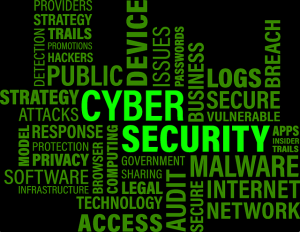IoT in Transportation Industry – Key Application Areas & Benefits

Internet of Things (IoT) has been a contributing technology in the transportation industry. Here is a thorough read on the different application areas and benefits that IoT offers to this domain.
“The Internet of Things is the game changer for an overall business ecosystem transformation.” – Joerg Grafe
The Internet of Things (IoT) has been a huge technological revolution that has been benefiting many industries, worldwide. Especially, the role of IoT post pandemic has been essentially significant and businesses are enjoying a lot of advantages by implementing this wonderful technology.
The Internet of Things (IoT) describes physical objects (or groups of such objects) with sensors, processing ability, software, and other technologies that connect and exchange data with other devices and systems over the Internet or other communications networks.
One industry segment that is a very happening domain is the transportation sector. There is so much activity and that too, with multi-faceted features. Implementing IoT in the transportation industry has been highly rewarding for the industry. The leverage of embedded sensors, processors, smart devices, actuators, Bluetooth devices etc. in different transportation conditions have been digitizing the future of the industry in a big way, by getting connected through cloud-based systems or different methods.
IoT is helping implementing applications in the airways, maritime, railways and roadways. It brings together the main technical and operational trends of data analytics, automation and mobility that are the key components of the transportation industry.
The global IoT in transportation market size was valued at $83.25 billion in 2020, and is projected to reach $495.57 billion by 2030, registering a CAGR of 19.9% from 2021 to 2030.
Major Benefits That Internet of Things Brings Along, for the Transportation Industry
- Enhancement of traveller’s experience, offering reliable and timely transportation and better communication
- Enhanced optimization of routes, planning of traffic related matters and best utilization of resources
- Lesser congestion and utilization of energy with real-time information about different traffic conditions
- More transparency and communication with customers and travellers
- Better and effective operational performance with timely management of infrastructure and proper utilization of budget and capabilities, with improved monitoring and productivity
- Increased safety of travellers with effective operations of sensor-based data and proper tracking of parameters like speed, temperature, parts, and their conditions, waiting times etc.
- Increased sustainability and security of all confidential information
- Reduction in environmental challenges that come along the way
- Better safety, protection with the help of sensors
- Study trends and futuristic pattern of traffic conditions for better management and appropriate actions for betterment of environment
Key Application Areas of IoT in Transportation Sector
- Road Transport & Traffic Department
IoT based sensors and different devices play a significant role in the road sector. They update travellers with the latest information about timings, schedule changes etc. They also help in reducing the fuel and resource wastage through different automation features. The sensors assist in providing information regarding fuel, routes, temperature etc.
One big help that IoT offers is better management of traffic related conditions. It gives updates on the flow of traffic in different areas, possible roadblocks, accidents that could hamper the traffic. It also can offer caution to travellers so that they can change the route if needed. Applications that use IoT are smart parking, traffic lights and smart accident assistance.
- Air Travel
IoT plays an important role in the airways sector by offering accurate real-time information about various things like baggage information to travellers, flight in and out details to taskforce, energy, and power utilization to technical staff, costing and financial information to finance people. It also helps save energy and power by switching off lights when not needed and control temperature settings as required.
- Supply Chain and Logistics
IoT in supply chain and logistics proves to be beneficial with its salient features such as real-time access to reports, high turnaround time, transparency on cargo planning, proper tracking, and status update, smooth transport process, less use of electricity, better communication within stakeholders, route optimization etc. Be it fleet management, warehouse management, logistics service booking and scheduling, travel, and fleet analytics – IoT can work wonders and offer great advantages.
- Automotive Segment
The automotive industry enjoys the goodness that IoT and connected devices bring along. The connected vehicle competence increases communication between vehicles and the associated infrastructure which can lead to a smooth operation on road, lesser energy and fuel consumption, better traffic control and seamless navigation.
- Ticketing Booths and Toll Centres
The traditional ways of collecting toll taxes from booths is quite cumbersome. With IoT and usage of automatic sensors with RFID tags, things are becoming faster, smoother, and effective. There are automatic fast tags available that can sense a vehicle coming from far off, based on the tag attached, scan it, debit the payment from the attached payment gateway, and let the vehicle pass by, without stoppage. This leads to lesser traffic congestion at tool booths and faster navigation of vehicles.
- Vehicle Tracking Systems
Vehicle tracking systems have been of great usage since years now for better monitoring of vehicles, drivers, routes, and overall task assignment. With IoT based devices and sensors, fleet tracking can be done with GPS based data. IoT can assist in trip scheduling, vehicle load management, driver schedules, notifications in case of rash driving, fuel usage etc. Even the behaviour of the driver can be tracked, and relevant action can be taken for a smooth future operation.
- Rail Transportation
The traditional way of manging rail transit isn’t sufficient to offer the best of performance, monitoring, and control. IoT brings in its army of sensors, readers, monitoring devices that help in better management of rail transit, problem solving and passenger satisfaction. As a mass rapid transit system, the rail transportation is making good use of IoT for activities such as faster response, better time schedule management, better client care and maintaining cleanliness and standards while travel.
- Effective Management of Assets and Inventory
Managing assets is a big job when it comes to the transportation industry. IoT based devices and sensors can help in remote monitoring and control of the inventory and assets. It offers real-time and detailed analytics with actual stock information for better management. This fastens the entire supply management chain and offers greater business results.
- Entertainment, Safety in Vehicles
With IoT based technologies, vehicles can have better facilities for entertainment like mobile device operated dashboard. Drivers can easily operate the dashboard through their smartphones or tablets, for operating music files, locate camera and sensors, fuel usage, location of car, GPS utilization, searching for locations etc. Voice commands can also be applied to these sensors for hands free operations to control the temperature, lighting effects, music choices etc.
- Electric Vehicle Management and EV Charging Stations
With the latest trends of electric cars going strong, the usage of EV charging stations is on a high. The EV charging functionalities will depend upon IoT based infrastructure for all their needs like payments, maintenance, processing etc. That is one great area IoT will offer bigtime assistance.
Courtesy: Global IoT transportation and logistics spending in 2015 and 2020 (in billion U.S. dollars)
Key Challenges of IoT in Transportation Sector
However attractive and effective IoT looks for the transportation industry, there are certain hurdles stakeholders will have to deal with, along with implementing IoT devices:
- Poor network connectivity at different locations
- Lack of encryption
- Lack of skilled expertise in operating IoT devices
- Risk of exposure to private information
- IoT malware and ransomware
- Cost investment and time to implement
Of course, all these challenges can be handled with time and efforts. Be it any upcoming technology, there is a lot of effort involved and this is no different.
Wrap Up
The above plethora of application areas in the transportation industry that is making best use of IoT is proof enough to show how rapidly IoT is influencing the business domain. The future trends of IoT show great demand for IoT application development not only in the transportation domain but in many other sectors too.
Implementation of IoT has a bright future with newer ways and means to offer an exceptional experience. Let the transportation industry enjoy the benefits big time!
Author Bio: Ankit is a Tech Enthusiastic Business Development Manager at SPEC INDIA a Custom Software Development Company. He loves to write and share content on latest technology news, updates, software tips for SMEs and more.






